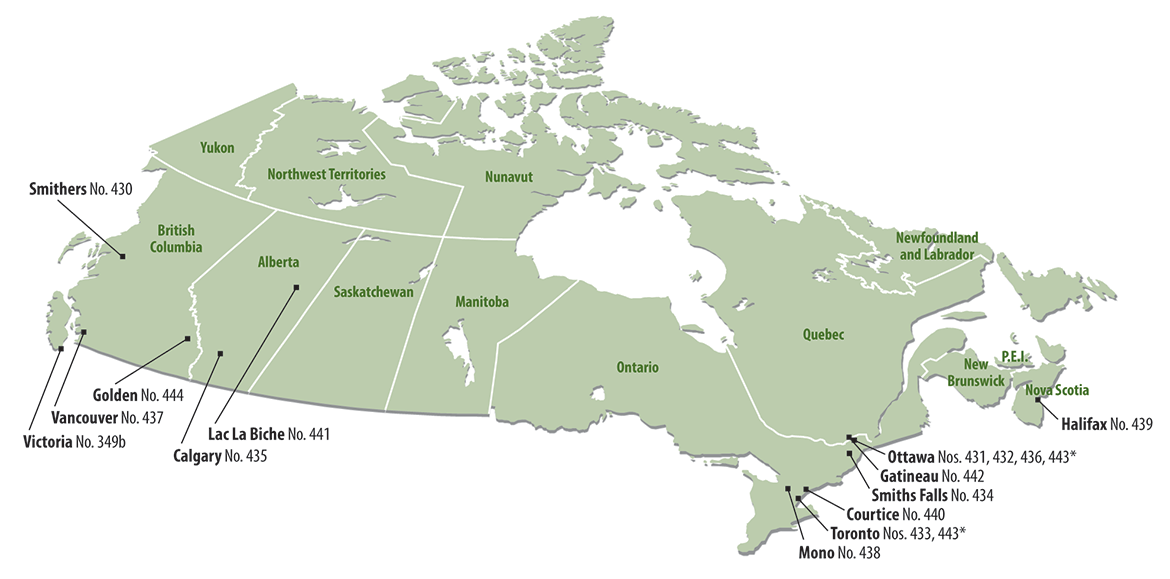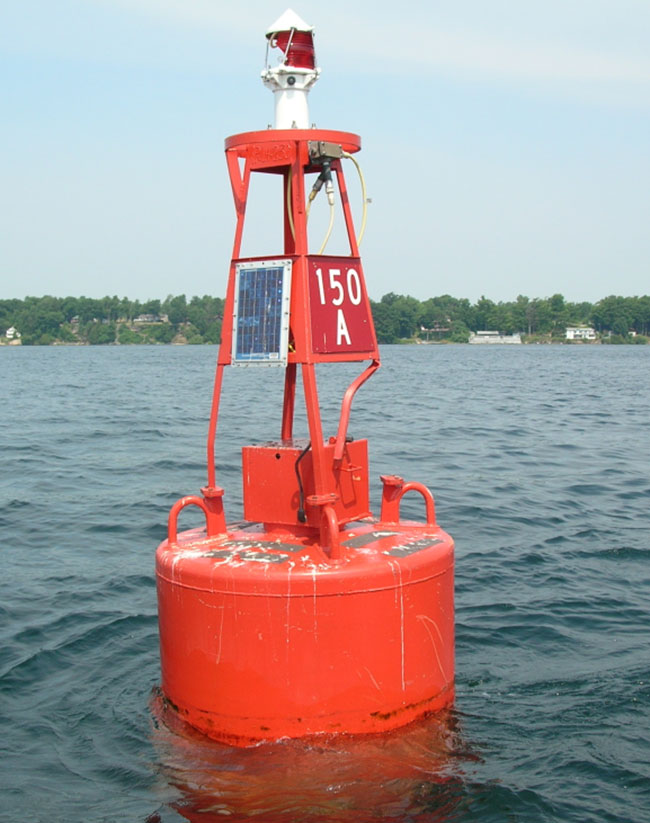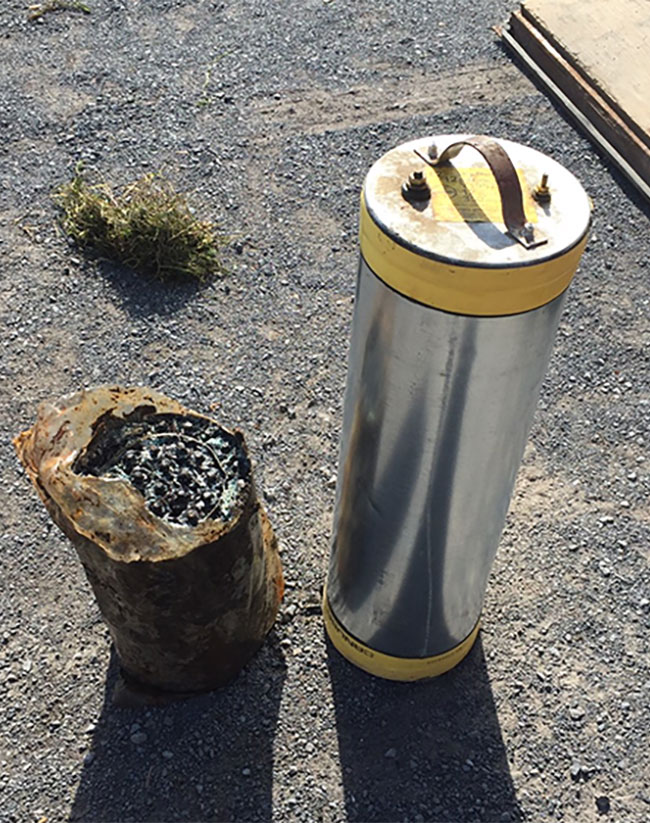
2020 Fall Reports of the Commissioner of the Environment and Sustainable Development to the Parliament of Canada Report 3—Environmental Petitions Annual Report
2020 Fall Reports of the Commissioner of the Environment and Sustainable Development to the Parliament of CanadaReport 3—Environmental Petitions Annual Report
Focus of the report
The purpose of this annual report is to inform Parliament and Canadians about the number, nature, and status of petitions and responses received from 1 July 2019 to 30 June 2020, as required by section 23 of the Auditor General Act. Find out more about environmental petitions.
The report includes a case study that highlights recent actions taken by the Government of Canada on an issue raised in petition 426 (Discarded batteries from Canadian Coast Guard Aids to Navigation), which was submitted in June 2019.
2019–20 Results
Petitions received
The OAG received 16 environmental petitions from 1 July 2019 to 30 June 2020. The petitions originated from 5 provinces: Alberta, British Columbia, Nova Scotia, Ontario, and Quebec (Exhibit 3.1).
Exhibit 3.1—Petitions came from 5 provinces between 1 July 2019 and 30 June 2020

British Columbia
430—Inquiry into the need for Fisheries and Oceans Canada to recover endangered eulachon
437—Using International Organization for StandardizationISO standards to measure greenhouse gases
444—Need for environmental impact assessment on ecological effects of wide-scale wolf reduction programs
Alberta
435—Use of social cost of carbon values by the Government of Canada
Nova Scotia
Quebec
442—Textile waste
Ontario
432—Concerns about single-use plastics in our waters and about vinyl acetate–based products
433—Certain organic flame retardants substance grouping
434—Fluralaner toxicity in the environment
436—Multiple incidences of dead fish found on the shores of the Lièvre and Ottawa rivers in July 2019
438—Reduction of plastic pollution
440—Uncertainties about the management of single-use plastics
443note *—Reporting relationship of the Canadian Nuclear Safety Commission
Source: Petitions submitted to the Auditor General of Canada. Summaries are available on the Office of the Auditor General of Canada’s website.
This year, 11 federal departments and agencies received petitions for a response. In many cases, a petition was sent to more than 1 department or agency. The 4 departments that received the most were
- Environment and Climate Change Canada (13 petitions)—petitions 349b, 432, 433, 434, 435, 436, 437, 438, 439, 440, 441, 443, and 444
- Health Canada (7 petitions)—petitions 431, 432, 433, 434, 438, 439, and 444
- Department of Finance Canada (3 petitions)—petitions 435, 442, and 443
- Fisheries and Oceans Canada (3 petitions)—petitions 430, 436, and 439
Key issues raised. The petitions addressed a wide variety of issues, including concerns about pollution from plastics (petitions 432, 438, and 440) and about toxic substances in the environment (petitions 430, 431, 433, and 434). Concerns about climate change, endangered fisheries, genetically modified fish, nuclear regulation, textile waste, and wolf reduction programs were among the issues raised in other petitions.
Departmental and agency performance and responses
This year, 11 departments and agencies responded to 17 petitions submitted during the current (2019–20) and previous (2018–19) reporting periods. All but 1 of the petition responses were provided within the 120-day statutory response period.
Administering the environmental petitions process
Submitting and publishing petitions on the OAG’s website. An updated website, including a new Environmental Petitions Submission Form and revised Petitions Catalogue, was officially launched on 25 November 2019. The Commissioner posts summaries of the environmental petitions received in the last 5 years in the Petitions Catalogue. Petitions and departmental and agency responses are available on request in the language that they were submitted in. Older petitions are available on request.
Raising Canadians’ awareness of environmental petitions. The OAG uses a variety of communications products to raise Canadians’ awareness of environmental petitions. In addition, the OAG’s employees have reached out to various organizations to share information about the petitions process, answer questions, and provide advice on submitting a petition. For example, they have delivered presentations on environmental petitions to several university classes and to organizations and groups that have expressed interest.
Supporting continuous improvement. The OAG sends a survey to petitioners when they receive responses from departments and agencies. This survey allows petitioners to assess and comment on the responses. Petitioners can allow their comments to be shared with officials from those departments and agencies.
Providing assistance to federal organizations. The OAG provides guidance to federal officials who respond to petitions. The OAG is also updating guidance materials to assist federal officials from the departments and agencies that will be new to the environmental petitions process because of changes to the Federal Sustainable Development Act and the Auditor General Act that take effect on 1 December 2020. As part of this exercise, the OAG consulted with officials from several departments that frequently receive petitions to get their insights to share with counterparts who might be unfamiliar with environmental petitions.
Incorporating petitions into the OAG’s audit work. Petitions and responses are shared with the OAG’s performance auditors. In addition, the OAG considers petitions and responses when developing its multi-year performance audit program.
Impact of COVID-19. As a result of the COVID-19 pandemic, the OAG’s employees have been working remotely since 16 March 2020. The OAG has continued to respond to questions regarding petitions from the public and federal departments and agencies.
Petitioners for the 5 petitions submitted after 16 March 2020 (petitions 440, 441, 442, 443, and 444) were informed that, because of circumstances resulting from COVID-19 and their effect on the operations of the Government of Canada, there would be a temporary delay in the OAG’s sending of petitions to departments and agencies for a response. The petitions were sent to the responsible ministers in June 2020.
The OAG recognized that many departments and agencies were actively responding to COVID-19. Accordingly, the OAG advised them that the Auditor General Act provides for the possibility of additional time to respond to petitions beyond the normal 120-day statutory response period as long as notification is provided by the original due date.
Period covered by the report
The annual report on environmental petitions covers the period from 1 July 2019 to 30 June 2020.
Petitions team
Principal: Kimberley Leach
Director: George Stuetz
Alison Clarke
Elisabeth Karner
Roxanne Lepage
Kris Nanda
Karen Webber
Case Study
Discarded batteries from Canadian Coast Guard Aids to Navigation
Petition 426

Buoy 150A, Cole Shoal in the St. Lawrence River near Brockville, Ontario
Photo: Canadian Coast Guard—Aids to Navigation Team, Prescott, Ontario—file photo

Aids to Navigation battery comparison—Corroded battery (left) and new battery (right)
Photo: Dillon Point
Petition 426, submitted in June 2019 by the Great River Network, raised concerns about the federal government’s response to requests from the public to mitigate and clean up discarded toxic batteries used to light Aids to Navigation channel marker devices provided by the Canadian Coast Guard in and around the Upper St. Lawrence River. The petition requested that the Canadian Coast Guard remove these batteries and asked for information about procedures and protocols for removing discarded batteries from Canadian waterways.
Background
From 2017 to 2019, during regular river community cleanup sessions in the Upper St. Lawrence River near Cornwall, Ontario, volunteer divers discovered discarded and leaking Aids to Navigation batteries. The Upper St. Lawrence River area, where the batteries were discovered near Akwesasne and Cornwall, is classified as an Area of Concern by the International Joint Commission.
According to the petition, local residents, including staff from the Mohawk Council of Akwesasne Environment Program, recognized the batteries from previous river cleanups in the 1980s when more than 100 such units were removed from the Upper St. Lawrence River. The petition stated that there were reports that from the late 1950s to the mid-1990s, Aids to Navigation batteries were discarded by Canadian Coast Guard vessels when the old units were being replaced.
The petitioner reported the existence of discarded Aids to Navigation batteries in the Upper St. Lawrence River via the Canadian Coast Guard hotline in 2018 and asked that they be removed. The petitioner later inquired about a written protocol for removing Aids to Navigation batteries.
Departmental response
A response issued in September 2019 by Fisheries and Oceans Canada, in collaboration with Transport Canada and Environment and Climate Change Canada, indicated that the Canadian Coast Guard was working closely with the Mohawk Council of Akwesasne to resolve the battery pollution problem in the Upper St. Lawrence River near Cornwall and Akwesasne. The response noted that a contract was being drafted to have the discovered batteries removed no later than winter 2019–20. Furthermore, Fisheries and Oceans Canada confirmed that a national directive addressing Aids to Navigation battery removal was expected to be completed in 2020.
Recent actions
In October 2019, the Canadian Coast Guard followed through on its commitment to retrieve the batteries, successfully removing 14 batteries from the river. Representatives from the Great River Network and the Mohawk Council of Akwesasne were present during the battery removal operation. The Canadian Coast Guard indicated that it would continue to retrieve submerged Aids to Navigation batteries when their existence and locations were reported.
Fisheries and Oceans Canada registered the 2 locations where the batteries were retrieved as suspected contaminated sites in the Federal Contaminated Sites Inventory as of 31 March 2020. The department indicated that it plans to initiate a phase II environmental site assessment at these sites in the 2021–22 fiscal year, and that it will take the necessary remediation actions to mitigate any undue risks to human health and to the environment. In addition, the department stated that it will treat any other locations where batteries are retrieved in the future as suspected contaminated sites and perform the necessary assessment work and put appropriate risk mitigation measures in place.
